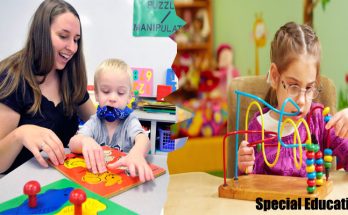Have special education personnel stated that your kid was ineligible for special education because they usually do not match into one of many 13 eligible categories? Does your kid have Pervasive Developmental Disorder (PDD) but you were told by school personnel that this doesn’t fit into the 13 eligible categories? Has your youngster been diagnosed as emotionally disturbed and also you think the child has autism? This article will go over how it is possible to decide what category of classification that your child can get special education services beneath. By understanding these categories you could advocate for the one particular that meets your children’s requirements.
The Folks with Disabilities Education Act (Notion) states that each kid having a disability must acquire a cost-free acceptable public education (FAPE). Also, special education services to meet their exclusive requirements. Labels or classifications do not decide, if a specific child is eligible for a particular special education service, although in some cases special education personnel act like it does.
Categories:
1. Autism: When you suspect that your kid has autism ask special education personnel to offer him or her, a childhood autism rating scale (CARS). The scale is accomplished by the parent answering 13 questions about their kid, and also a knowledgeable individual providing a score for the scale. The larger the quantity the extra possibility that the kid has autism. In the event, the scale is positive take your child to a specialized Pediatrician that specializes in autism.
The pervasive developmental disorder is on the Autism spectrum. Autism is amongst the eligible categories for special education services. So a youngster with PDD is eligible for special education services beneath the category of autism.
2. OHI: For any youngster to become eligible under this category normally demands some type of documentation from the child’s physician. Quite a few young children with ADD and ADHD receive special education services under this category.
3. Mental Retardation: Determined by IQ score; a child’s IQ score below 75 is regarded to be in the mental retardation variety. Be cautious if your child’s IQ is regular and decreases as they develop older, this is indicative of an inappropriate education, not necessarily mental retardation.
4. Emotional Disturbance (ED): Quite a few kids with autism are being provided an ED label-Why? Since in my opinion, special education personnel is reluctant to give a child an autism label due to the expense of special education services. For a youngster to genuinely be ED, they must have no other disability!
5. Deafness: This can be a total loss of hearing and usually requires physician documentation.
6. Hearing Impairment: Not a total loss of hearing as above!
7. Visual Impairment: Serious impairment not fixed by glasses or contacts.
8. Deaf-Blindness: Total loss of hearing and total loss of sight.
9. Distinct Finding out Disability (LD): Young children with reading difficulty despite acceptable instruction, math difficulty despite acceptable instruction, dyslexia, visual processing disorder, sensory integration disorder (SID), auditory processing disorder, all qualify below LD.
10. Many Disabilities. Ought to include a further disability and also mental retardation.
11. Orthopedic Impairment: A kid with Cerebral Palsy would qualify under this category.
12. Speech or Language Impairment. Consists of delayed speech, communication disorder, language disorder for instance dyslexia, receptive and expressive language disorder, and so forth.
13. Traumatic Brain Injury: Any injury towards the brain either at birth or when the kid was older.
By understanding the 13 categories and what’s expected for each single, you will be capable to be an informed advocate for your kid. Kids who need special education services and usually do not get them may have their lives ruined forever!





